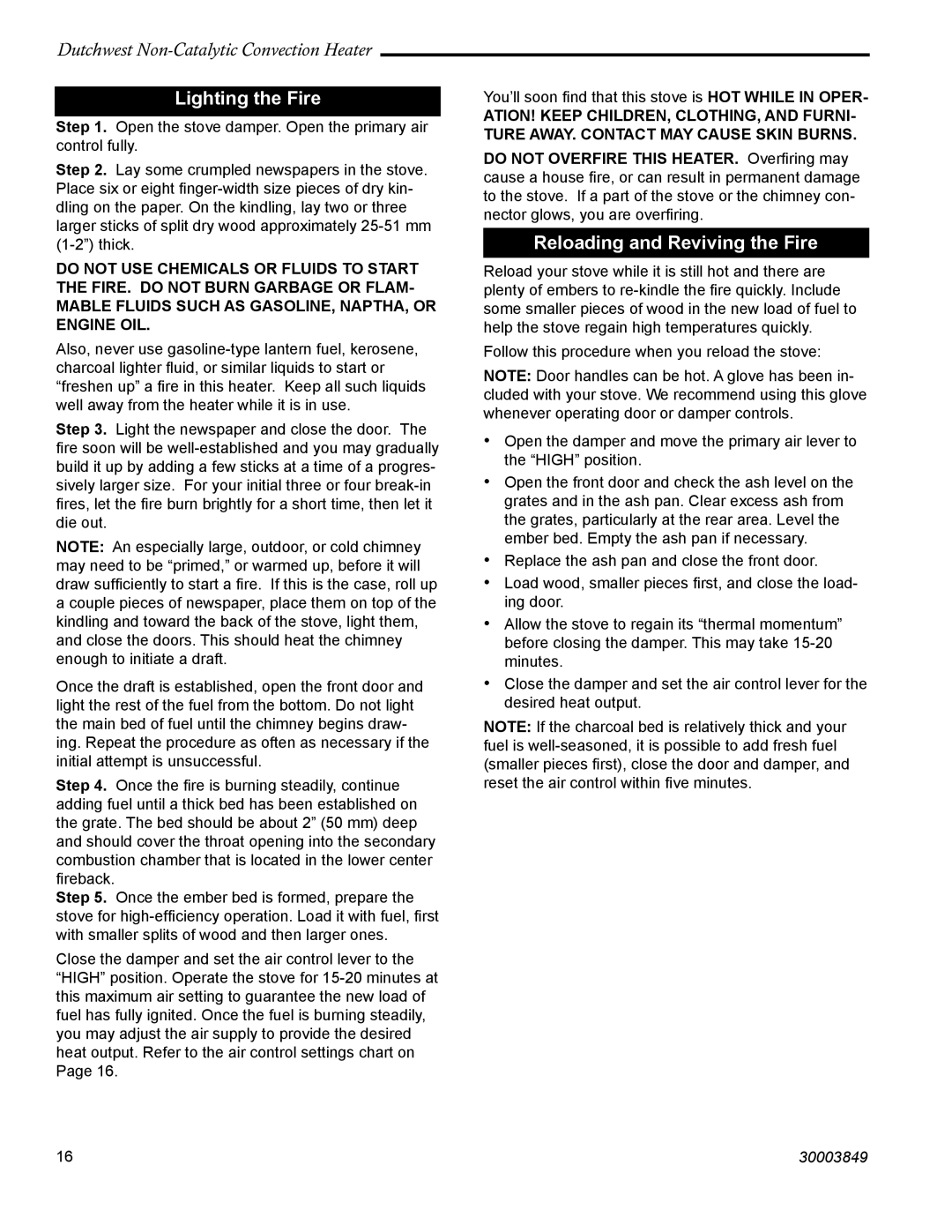
Dutchwest
Lighting the Fire
Step 1. Open the stove damper. Open the primary air control fully.
Step 2. Lay some crumpled newspapers in the stove. Place six or eight
DO NOT USE CHEMICALS OR FLUIDS TO START THE FIRE. DO NOT BURN GARBAGE OR FLAM- MABLE FLUIDS SUCH AS GASOLINE, NAPTHA, OR ENGINE OIL.
Also, never use
Step 3. Light the newspaper and close the door. The fire soon will be
NOTE: An especially large, outdoor, or cold chimney may need to be “primed,” or warmed up, before it will draw sufficiently to start a fire. If this is the case, roll up a couple pieces of newspaper, place them on top of the kindling and toward the back of the stove, light them, and close the doors. This should heat the chimney enough to initiate a draft.
Once the draft is established, open the front door and light the rest of the fuel from the bottom. Do not light the main bed of fuel until the chimney begins draw- ing. Repeat the procedure as often as necessary if the initial attempt is unsuccessful.
Step 4. Once the fire is burning steadily, continue adding fuel until a thick bed has been established on the grate. The bed should be about 2” (50 mm) deep and should cover the throat opening into the secondary combustion chamber that is located in the lower center fireback.
Step 5. Once the ember bed is formed, prepare the stove for
Close the damper and set the air control lever to the “HIGH” position. Operate the stove for
You’ll soon find that this stove is HOT WHILE IN OPER-
ATION! KEEP CHILDREN, CLOTHING, AND FURNI- TURE AWAY. CONTACT MAY CAUSE SKIN BURNS.
DO NOT OVERFIRE THIS HEATER. Overfiring may cause a house fire, or can result in permanent damage to the stove. If a part of the stove or the chimney con- nector glows, you are overfiring.
Reloading and Reviving the Fire
Reload your stove while it is still hot and there are plenty of embers to
Follow this procedure when you reload the stove:
NOTE: Door handles can be hot. A glove has been in- cluded with your stove. We recommend using this glove whenever operating door or damper controls.
•Open the damper and move the primary air lever to the “HIGH” position.
•Open the front door and check the ash level on the grates and in the ash pan. Clear excess ash from the grates, particularly at the rear area. Level the ember bed. Empty the ash pan if necessary.
•Replace the ash pan and close the front door.
•Load wood, smaller pieces first, and close the load- ing door.
•Allow the stove to regain its “thermal momentum” before closing the damper. This may take
•Close the damper and set the air control lever for the desired heat output.
NOTE: If the charcoal bed is relatively thick and your fuel is
16 | 30003849 |
